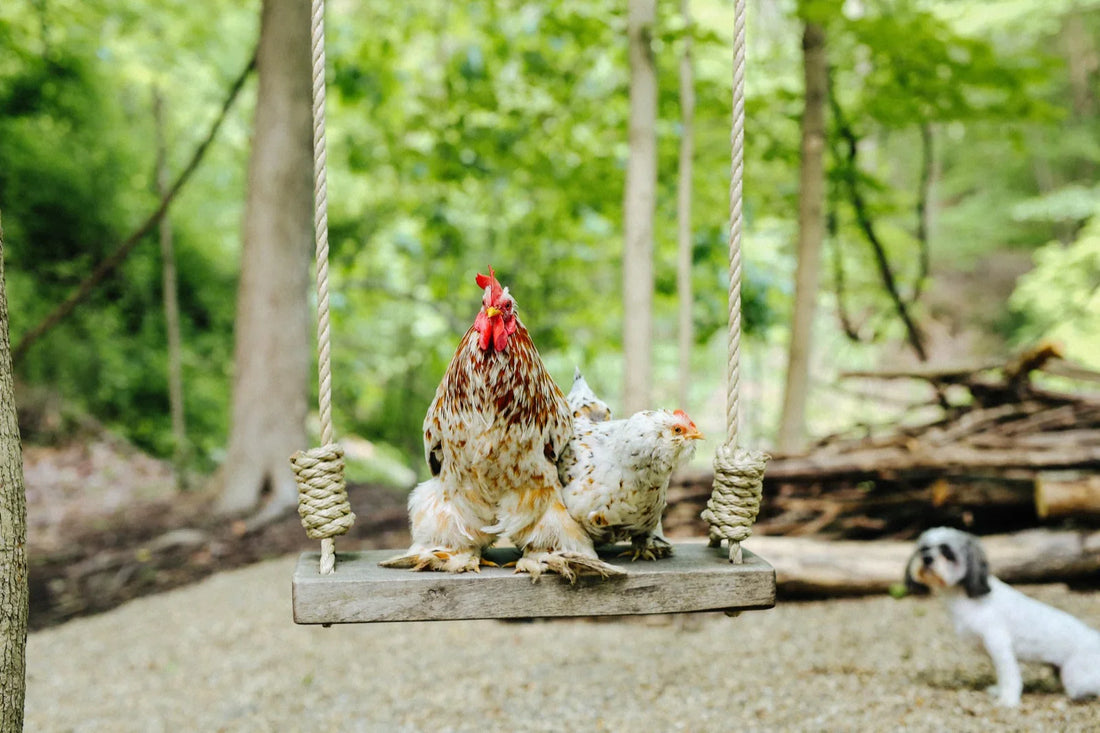Are you planning to bring your dog closer to your farm animals but worry about safety and stress? Introducing dogs to farm animals can be tricky if not done right.
You want your dog to feel calm, and your animals to stay safe and relaxed. The good news? You can start this process from a distance using simple stock proofing basics. This approach helps everyone get comfortable without any chaos.
Keep reading, and you’ll discover easy steps to make these introductions smooth and stress-free for both your dog and your farm animals.

Credit: www.sciencedirect.com
Benefits Of Gradual Introductions
Introducing dogs to farm animals slowly helps reduce stressfor both. Animals feel safer with distance. Dogs stay calm and curious, not scared or excited.
Gradual meetings build positive feelings. Dogs learn animals are friendly. Farm animals get used to dogs’ presence. Trust grows over time, making future meetings easier.
Keeping introductions controlled helps avoid sudden reactions. It stops chasing or barking. This method creates a peaceful environment. Both dogs and farm animals relax and accept each other more quickly.
Preparing Your Dog For The Farm
Basic obedience traininghelps your dog listen well. Teach simple commands like sit, stay, and come. Practice these commands in quiet places first. Then, try near farm sounds. This builds focus and control.
Start familiarizing your dog with farm soundsfrom a distance. Use recordings or visit the farm quietly. Let your dog hear animals like cows, sheep, and chickens. Keep your dog calm and relaxed.
Gradually, your dog will get used to the noises. This reduces fear or excitement near farm animals. Patience is key. Small steps help your dog feel safe.
Stock Proofing Essentials
Choosing the right fencinghelps keep dogs and farm animals safe. Use strong materials like wire or wood. Fences should be tall enough to stop dogs from jumping over. Check for gaps or weak spots often.
Secure gates and barriersprevent animals from escaping or meeting too soon. Gates must close tightly and lock well. Barriers stop dogs from rushing toward animals quickly. Always watch animals during introductions.
Safe viewing areaslet dogs see farm animals without getting too close. Use a distance that keeps both calm. This helps dogs get used to new smells and sounds slowly. Stay calm and patient. Small steps work best.
Setting Up Controlled Viewing Distances
Visual barriershelp keep dogs and farm animals safe. They block direct views and reduce stress. Use fences, bushes, or screens to create these barriers. These barriers let animals see each other but stay apart.
Keep a safe distancebetween dogs and farm animals. Start far apart and slowly bring them closer. Watch how they react. Never rush the process to avoid fear or aggression.
Observe body languagecarefully. Signs like wagging tails or relaxed ears show calmness. Stiff bodies, growling, or barking mean stress or danger. Stop and give more space if needed. Stay calm and patient throughout.
Step-by-step Introduction Process
Start with Initial Visual Contact.Let the dog and farm animals see each other from a safe distance. This helps them get used to each other’s presence without stress. Watch their body language carefully. Calm and curious signals are good signs.
Move to Leashed Approach Sessions.Keep the dog on a leash for control. Slowly bring the dog closer to the animals in short sessions. Praise calm behavior to encourage good habits. Avoid sudden moves or loud noises that may scare animals.
Try Short Supervised Interactions.Allow brief, close encounters under strict supervision. Keep sessions short to prevent stress. Use treats to reward the dog for calmness. Always be ready to separate them if needed.
Handling Common Challenges
Dogs often get very excitedwhen near farm animals. Keep them calm by using a leash and gentle commands. Let the dog see animals from a safe distance first. Slowly get closer only if the dog stays calm. Praise the dog for good behavior.
Farm animals can feel scaredby dogs. Use fences or barriers to protect animals. Let them see the dog but not get too close. Over time, animals get used to the dog’s presence. Watch their body language for signs of stress.
Unexpected reactions may happen. A dog might bark loudly or an animal might run away. Stay calm and give everyone space. Do not force interactions. Keep trying with short visits and quiet behavior. Patience is key for all.
Long-term Integration Tips
Building trusttakes time. Start with short, calm meetings from a distance. Let dogs and farm animals see each other without pressure. Use treats and gentle praise to encourage calm behavior. Trust grows slowly but surely.
Keep safe boundariesusing strong fences or barriers. This protects both animals and people. Boundaries stop sudden moves that might scare or hurt. Change fences only when all animals feel calm and safe.
Regular monitoringis key. Watch animals closely for signs of stress or fear. Change the setup if any animal feels unsafe. Small adjustments help everyone stay calm and happy. Patience and care make the best team.

Credit: cutestcoops.com

Credit: www.oregonhumane.org
Frequently Asked Questions
How Can Stock Proofing Protect Farm Animals And Dogs?
Stock proofing uses barriers to safely separate dogs from farm animals. It prevents direct contact, reducing stress and injury risks. Proper fencing and secure gates help dogs observe farm animals from a distance, promoting calm introductions and safer interactions.
What’s The Best Distance To Introduce Dogs To Farm Animals?
Maintain a safe distance, usually 15-20 feet, during initial introductions. This space allows animals to observe each other without feeling threatened. Gradually decrease distance as both animals become comfortable, ensuring a calm and controlled environment throughout the process.
How Do I Train My Dog For Farm Animal Introductions?
Start with basic obedience training to ensure control around animals. Use commands like “sit,” “stay,” and “leave it. ” Reward calm behavior and discourage chasing instincts. Controlled training helps dogs remain calm and respectful near farm animals, ensuring safer interactions.
Why Is Gradual Introduction Important For Dogs And Farm Animals?
Gradual introduction reduces stress and fear for both dogs and farm animals. It allows them to get used to each other’s presence slowly. This method prevents aggressive behaviors and builds positive associations, leading to peaceful coexistence on the farm.
Conclusion
Introducing dogs to farm animals safely takes time and care. Use strong fences and barriers to keep animals apart at first. Let dogs watch from a distance to get used to the new animals. Watch their behavior closely and stay patient.
This helps reduce stress for both dogs and farm animals. Remember, slow steps build trust and keep everyone safe. Following stock proofing basics protects your animals and creates a peaceful farm environment. Keep practicing these simple steps for the best results.




